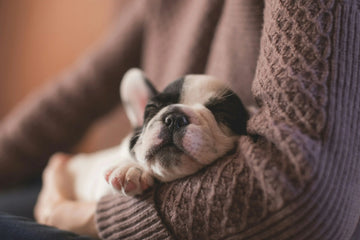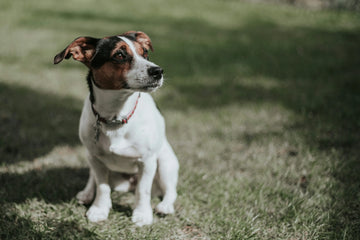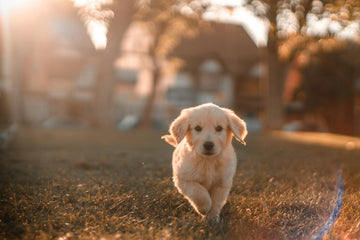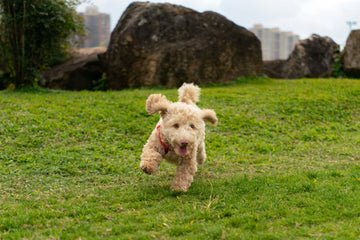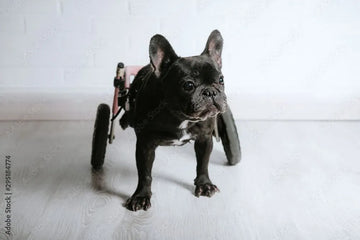I. How Do Dogs Sleep?

II. Four Scientific Reasons Why Dog Sleeps With Eyes Open

-Physiological Traits of Short-Nosed Breeds: Short-nosed dogs (like Bulldogs, Pugs, etc.) have a unique skull structure with shallow eye sockets, making it difficult for their eyelids to fully close. Their eyeballs sit like marbles in a shallow bowl, often leaving a slight gap even when they try to close their eyes. This is especially common in certain breeds, and such dogs may need additional eye care, such as using moisturizing eye drops to prevent dryness.
-Unconscious Response During Dreaming:During the rapid eye movement (REM) phase of sleep, a dog’s brain is very active, and its eyeballs move quickly beneath the eyelids. In some cases, due to neurological variations, a dog’s eyelid muscles relax, causing the eyes to remain slightly open. While the eyes appear open, the dog is not truly seeing anything around them.

-Natural Tear Protection Mechanism: Dogs have a unique tear gland system. When their eyelids do not fully close, the third eyelid (nictitating membrane) releases extra tears to keep the cornea moist. This mechanism was originally an adaptation for desert-dwelling ancestors, helping them to combat wind and sand. Today, it still serves as a built-in protection mechanism for dogs that sleep with their eyes open.
III. When to Be Concerned About Dog Sleeps With Eyes Open

-Persistent Eye Abnormalities: If your dog’s eyes remain open while sleeping and you notice unusual discharge (such as yellow mucus) or redness in the conjunctiva, this may indicate an eye infection. A healthy dog’s cornea should remain clear and moist even if their eyes are slightly open during sleep. If there is persistent discharge or inflammation, it’s time for a vet visit.
-Sudden Behavioral Changes: If your dog suddenly starts sleeping with its eyes open and also shows signs of lethargy, difficulty navigating around the house, or bumping into furniture, this may be a sign of vision impairment. This is especially concerning in senior dogs (7 years and older), as their risk of eye diseases increases with age. If you notice these changes, it’s advisable to have a check-up as soon as possible.
-Other Systemic Symptoms: If your dog displays symptoms like twitching, drooling, rapid breathing, or seizures along with sleeping with its eyes open, it may indicate a neurological issue. In such cases, blood tests or imaging scans are needed for a proper diagnosis.
IV. FAQ
Q1: Can sleeping with eyes open damage my dog’s vision?
A: In the short term, no. However, prolonged exposure may accelerate tear evaporation. If you have a short-nosed dog, daily cleaning with warm water and using veterinary artificial tears (never human eye drops) is recommended.
Q2: Can I manually close my dog’s eyelids while they sleep?
A: Touching a sleeping dog's eyelids may trigger a defensive response. Instead, if you're concerned about dryness, gently massage the eye area when your dog is awake to encourage tear production.
Q3: Do all dogs sleep with their eyes open?
A: Puppies rarely exhibit this behavior due to their developing nervous system, while senior dogs experience it more frequently due to muscle relaxation.


